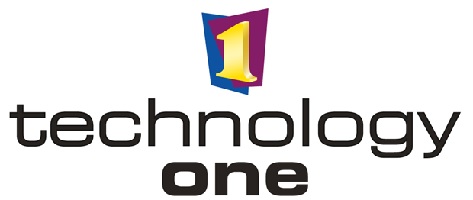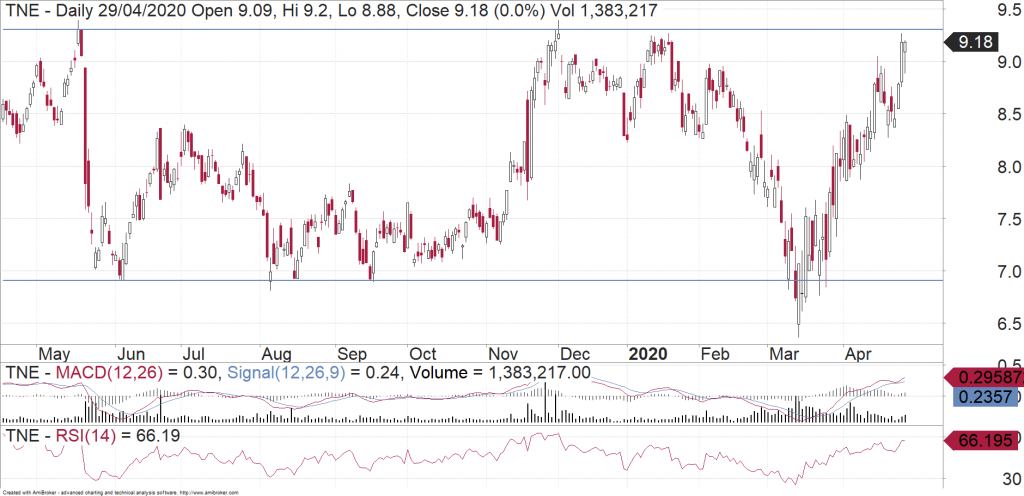Technology One (ASX:TNE) shares have recently performed very well, trading back up towards levels seen at the start of the year. Although it has displayed defensive characteristics, do we see further upside in the share price? Interestingly, unlike many ASX-listed companies, TNE has not issued an ASX release to either update or comment on the implications from COVID-19. Having said that, the key risks include a potential slowdown in new contracts, as well as a delay in project implementation. The latter impacts TNE’s Consulting division, which is responsible for the implementation of TNE’s software. Given that the Consulting division is not the major driver of group revenue and profit, our main focus in this note is the extent to which the main revenue and profit drivers (i.e. license fees and SaaS fees) are likely to be impacted.
About Technology One
Technology One is Australia’s largest enterprise resource planning (ERP) Software as a Service (SaaS) provider. The Company is the only SaaS provider with a fully integrated ERP suite and its entire enterprise suite is delivered on mobile devices. Customers use TNE’s SaaS solution, as the benefits include cost savings, scalability, security, and anywhere-anytime access. It also allows agility and speed to market of new products. These customers have hundreds of thousands of users, making TNE’s the largest ERP SaaS offering in Australia.
The business model entails TNE developing, marketing, selling, implementing, supporting and running its pre-configured solutions for customers across eight markets: government, local government, financial services, education, health and community services, asset intensive, project intensive and corporate.
Key Fundamental Drivers
Defensive Earnings Profile
TNE’s profit growth is largely underpinned by the Company transitioning existing clients from the SaaS platform to its SaaS model (i.e. ‘cloud’). This transition is ongoing, as there is still around one-third of its customers on the TNE SaaS platform, with still around two-thirds of its customers still to be transitioned. This underpins the defensive nature of TNE’s earnings in light of the deteriorating COVID-19 economic backdrop, especially as the transition has seen the portion of recurring revenues increase significantly in FY19, to 84%, with a target of 93% by FY25. Other factors underpinning the defensive nature of TNE’s earnings include:
i. Most of the Company’s revenues and all of its earnings are generated in Australia and NZ, with relatively little global exposure.
ii. Around 85% revenue is generated from the government, education and health sectors (or ‘verticals’), which are highly defensive and where the Company has a customer retention rate of +99%. To this end, the Company has a long track record of growth within its core market verticals. The Company continues to grow strongly in its core local council and education verticals, but is also gaining momentum in other markets including government, health & community services, and asset/project intensive industries.
iii. TNE has a target to increase the number of SaaS customers from 435 at present to ~1,000 by FY22. This is a key factor underpinning expectations of mid double-digit NPAT growth over the next three years. A key part of this strategy is to focus on existing customers, in particular increasing the number of products used by the existing customer base. At present, TNE has 14 product suites (or ‘licensable products’) and the Company has recently made steady progress in increasing the number of average products per customer. As at FY19, there were 5.5 products per customer, up from 5.4 in FY19 and 5.1 in FY17.
Given the sticky nature of the customer base, the Company expect this figure to increase to an average of 8.1 products per customer by FY27, which, in turn, would provide a significant revenue uplift to new Annual Recurring Revenue (ARR).
Margin Targets Revised Higher
Aside from the shift to cloud creating a more defensive revenue profile (as revenues become stickier with IT departments effectively outsourced), the other key benefit from the shift to cloud is the potential for margins to improve through increased leverage.
To this end, in FY19 TNE reported significant margin expansion to 27%, on a profit before tax (PBT) basis, from 20% in FY18. The Company expects PBT margin to improve to 35% “in the next few years” from the 27% reported in FY19. The medium-term PBT margin target of 35% has been recently upgraded from ~30% and underpins the attractive earnings growth profile over the medium term given that the migration to the cloud (which is higher margin) continues and the Company is targeting additional revenue from customers using more products in the TNE suite.
As revenue growth in SaaS is expected to continue to grow in line with recent trends (as more customers move from on-premise to the SaaS platform), reaching the 35% margin target in FY24 relies heavily on operating cost growth out to FY24 being contained to ~3% per annum, especially as SaaS platform costs are expect to progressively rise each year to FY24. Accordingly, the risk is that it TNE achieves its PBT margin target beyond FY24.
Balance Sheet Position Provides A Buffer
The balance sheet is in a net cash position. The cash balance as at 30 September 2019 was $105m, with no debt. Over the short term, the strong balance sheet position provides the Company with scope to undertake capital management and continue undertaking Research & Development (R&D), which is focused on developing TNE’s product suite for the cloud. Over the medium term, we expect the Company to use its cash position to pursue further small bolt-on acquisitions, which have generally been integrated well.
In addition, the strong cash balance safeguards the Company against any potential cashflow impacts arising from COVID-19. These include invoices potentially being delayed while TNE incurs payments upfront in order to secure discounts from suppliers.
Fundamental View
We take a cautious fundamental view on TNE at present for the following reasons:
i. The shares are currently trading on a 1-year forward P/E multiple of ~40x and over the past 18 months, this multiple has varied between ~30-45x. From a valuation perspective, the shares continue to trade on multiples comparable with those for pure-play global SaaS operators.
ii. While the balance sheet is in a strong position and earnings growth profile contains a mix of defensive and growth qualities (from the transition of its customer base to the cloud), the earnings growth profile (10-15% over the medium term) is not without risk. In particular, the trajectory towards the PBT margin of 35% by FY24, which is highly reliant on cost growth being maintained at FY19 levels for an extended period.
Charting View
Back in March, TNE bounced off support under $7 and then made some very good progress to get back near its recent high. It could possibly encounter some resistance up here so we may see it ease back in the short term. Ideally we would like to see it find support near $8 which would provide investors with a better risk/reward ratio. However, if it breaks to a new high, then it would be in a new trading range. Any breakout would therefore be an opportunity to buy in and follow the momentum.

Michael Gable is managing director of Fairmont Equities.
Current share prices available here.
You can learn more about technical analysis in this article.
An 8-week FREE TRIAL to The Dynamic Investor can be found HERE.
Would you like us to call you when we have a great idea? Check out our services.
Disclaimer: The information in this article is general advice only. Read our full disclaimer HERE.
Like this article? Share it now on Facebook and Twitter!

